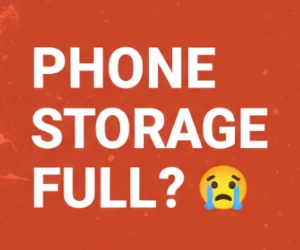Digital Labels for Small Business: Benefits & Implementation Guide.
Paper labels served businesses well for decades, but the retail market has evolved. Small businesses now face pressure to update pricing quickly, reduce waste, and compete with larger retailers who can change prices instantly. Digital labels offer a solution that’s becoming increasingly accessible for businesses of all sizes.
Electronic shelf tags and digital printing labels are transforming how small businesses manage their product displays, pricing, and inventory information. This technology shift isn’t just about keeping up with trends—it’s about gaining operational advantages that can directly impact your bottom line.
What are Digital Labels?
Digital labels, also known as electronic shelf labels (ESLs) or electronic shelf tags, are battery-powered displays that replace traditional paper price tags. These devices connect wirelessly to your point-of-sale system, allowing you to update product information, prices, and promotional details remotely.

Unlike traditional labels that require manual replacement, digital shelf labels can display different information throughout the day. You might show regular pricing during standard hours, then switch to happy hour prices for your café, or highlight special promotions during peak shopping times.
Key Benefits for Small Business Owners.
Instant Price Updates:
Traditional pricing changes mean printing new labels, removing old ones, and manually placing new tags—often during busy periods when staff are needed elsewhere. Digital labels eliminate this time-consuming process.
Price changes happen instantly across all connected devices, whether you’re updating one item or your entire inventory.
This capability proves especially valuable during sales events, seasonal pricing changes, or when responding to competitor pricing. You can adjust prices from your office, at home, or even while travelling.
Reduced Labour Costs:
Staff time spent on label changes can be redirected to customer service, inventory management, or other revenue-generating activities. Many small business owners report saving several hours weekly once they implement electronic shelf tags.
Consider a small grocery store that previously spent 10 hours weekly on price changes. With digital labels, that time investment drops to minutes, freeing up staff for more customer-facing roles.
Improved Accuracy:
Manual label changes introduce human error. Mismatched prices between shelf tags and point-of-sale systems create customer frustration and potential legal issues. Digital shelf labels sync directly with your inventory system, ensuring displayed prices always match what customers pay at checkout.
Professional Appearance:
Digital labels provide a consistent, modern look that enhances your store’s professional image. The clear displays remain legible under various lighting conditions and don’t fade or become damaged like paper labels.
Practical Applications.
Dynamic Pricing Strategies:
Small businesses can now implement sophisticated pricing strategies previously available only to large retailers. A bakery might automatically reduce prices on day-old items, while a clothing boutique could schedule weekend sale prices without manual intervention.
Enhanced Product Information:
Beyond pricing, digital labels can display additional product details, ingredients, nutritional information, or promotional messages. This extra space helps customers make informed decisions and can reduce staff queries.
Inventory Management:
Some advanced electronic shelf labels integrate with inventory systems to display stock levels or automatically highlight items requiring reordering. This visibility helps prevent stockouts and improves inventory turnover.
Implementation Considerations.
Initial Investment:
Digital labels require upfront investment, but costs have decreased significantly as the technology matures. Many suppliers offer leasing options or staged rollout plans to make the transition more manageable for small businesses.
Staff Training:
The learning curve is minimal. Most systems feature intuitive interfaces, and staff typically master the basics within hours. The reduction in manual label management often outweighs any initial training requirements.
Technical Integration:
Modern digital label systems integrate with most point-of-sale and inventory management software. Your technology provider should offer installation support and ongoing technical assistance.
Getting Started.
Begin by evaluating your current label management process. Calculate time spent on price changes, frequency of pricing errors, and associated costs. This baseline helps determine potential return on investment.
Consider starting with high-turnover items or promotional areas where price changes occur most frequently. This targeted approach allows you to experience benefits whilst minimising initial costs.
Research suppliers who understand small business needs and offer appropriate support levels. Look for companies providing demonstration units, allowing you to test the technology before committing to a full installation.
Transform Your Business Operations.
Digital labels represent more than a technology upgrade. They’re an operational transformation that can give small businesses competitive advantages previously available only to larger retailers. The combination of time savings, improved accuracy, and enhanced customer experience makes digital labels a worthwhile investment for businesses ready to modernise their operations.
The question isn’t whether digital labels will become standard in retail: it’s whether your business will be among the early adopters who gain competitive advantages, or whether you’ll be catching up later.

